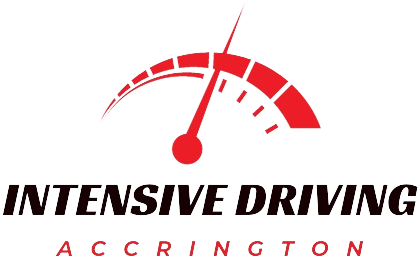Over view do you enjoy being a driver and educating others on how to drive safely, you could find a career as an instructor of driving appeal. We’ll go over the requirements for certified driving instructors, possible problems, and job tasks in this article.
Becoming a Good Driving Instructor
⦁Obtain Proper Training:
Join a well-known driving instructor training course to acquire the essential knowledge and skills. These courses typically include subjects like traffic regulations, instructional methods, and car mechanics.
⦁Pass the Theory Test:
Get ready for and complete the theory exam, which evaluates your understanding of driving lesson regulations and instructional methods…
⦁Apply for Instructor Certification:
Make sure you register with the relevant local government or the Driving and Vehicle Standards Agency (DVSA). Get hold of the required forms and finish the application procedure.
⦁Gain Experience:
Practice under knowledgeable instructors to enhance your teaching skills. You will be able to improve your teaching strategies and develop a strong sense of confidence in your skills through this practical experience.
⦁Develop Patience:
It can be difficult to teach driving, especially to students who feel fearful or lack expertise. You must be patient to help the pupils overcome their concerns and develop into competent, responsible drivers.
⦁Stay Updated:
Remain current on driving regulations, traffic laws, and the newest car technology. Maintaining current knowledge will enable you to provide your students with more current and precise advice.
⦁Gain Practical Teaching Experience:
Gain practical experience under the supervision of a qualified instructor working with actual pupils. Hone your teaching skills and improve your teaching techniques through practice.
⦁Take the Driving Ability Test :
Showcase your driving expertise and demonstrate your capability to navigate through different road scenarios. Complete the practical driving examination.
Proper Guide:
⦁Understand the Role of a Driving Instructor
An expert who educates children about safe driving and traffic laws is known as a driving instructor. They are crucial in assisting pupils in gaining the information and abilities required to drive safely. What driving instructors do is as follows:
⦁Classroom Instruction:
Instruct students in defensive driving methods, car maintenance, traffic laws, and safety procedures.
To pass along information, use lectures, videos, tests, and homework.
⦁Behind-the-Wheel Training:
Sit in the passenger seat and instruct students during actual driving sessions. Concentrate on particular abilities such as safe lane changes, parallel parking, and driving on a busy road.
Benefits of Being a Driving Instructor
.Flexible Schedule:
Select between working part-time or full-time employment. Many instructors who teach driving can manage their personal and professional obligations because of their flexible schedules.
⦁Job Satisfaction:
Help students gain valuable life skills. There’s immense satisfaction in helping individuals gain the skills and confidence they need to become safe drivers.
⦁Stability:
Demand for Automatic Driving Lessons remains steady. With a growing demand for qualified driving instructors, this profession offers excellent job stability and potential for career advancement.
⦁Continuous Learning:
Teaching driving provides opportunities for ongoing learning and personal development, as you stay updated on traffic laws and teaching techniques.
Challenges in controlling speed
some driving instructor challenges in controlling speed are as follows:
⦁Emphasize Safe Driving Practices:
Emphasize to those you teach the necessity of exceeding speed limits and changing their speeds in response to visibility, traffic volume, and roadway conditions.
⦁Practice Defensive Driving:
Teach your students to anticipate possible risks and maintain a safe distance from other vehicles to encourage them to develop responsible Manual Driving habits.
⦁Provide Feedback:
Offer constructive feedback to your students regarding their speed control skills. Point out instances where they may have been driving too fast or too slow and guide how to adjust their speed appropriately.
FAQ
1. Do I Need Superhuman Driving Skills?
Nope! You do need to be a skilled and safe driver, but the focus here is teaching. A clean driving record (ideally no points in the past few years) and a full license for a minimum period (often 3-4 years) are typical requirements. You’ll hone your teaching skills during the qualification process.
2. What Kind of Training is Involved?
There will be classroom learning covering things like traffic law, teaching methods, and car maintenance. You’ll also undergo practical assessments to showcase your driving skills and ability to explain them clearly. Patience and clear communication are key!
3. Is There a Driver’s Ed Degree?
Not usually. Most countries or regions have a specific licensing process for instructors. This typically involves a government-approved training course followed by exams.
4. What Qualities Make a Good Instructor?
Patience is king (or queen) here! You’ll be dealing with nervous learners who make mistakes. Being a good communicator, adaptable, and having a passion for road safety are all essential.
5. Is There Demand for Driving Instructors?
The demand can fluctuate depending on location, but with more people on the road, there’s a constant need for new instructors. You can work for a driving school or set up your own business after qualification.


